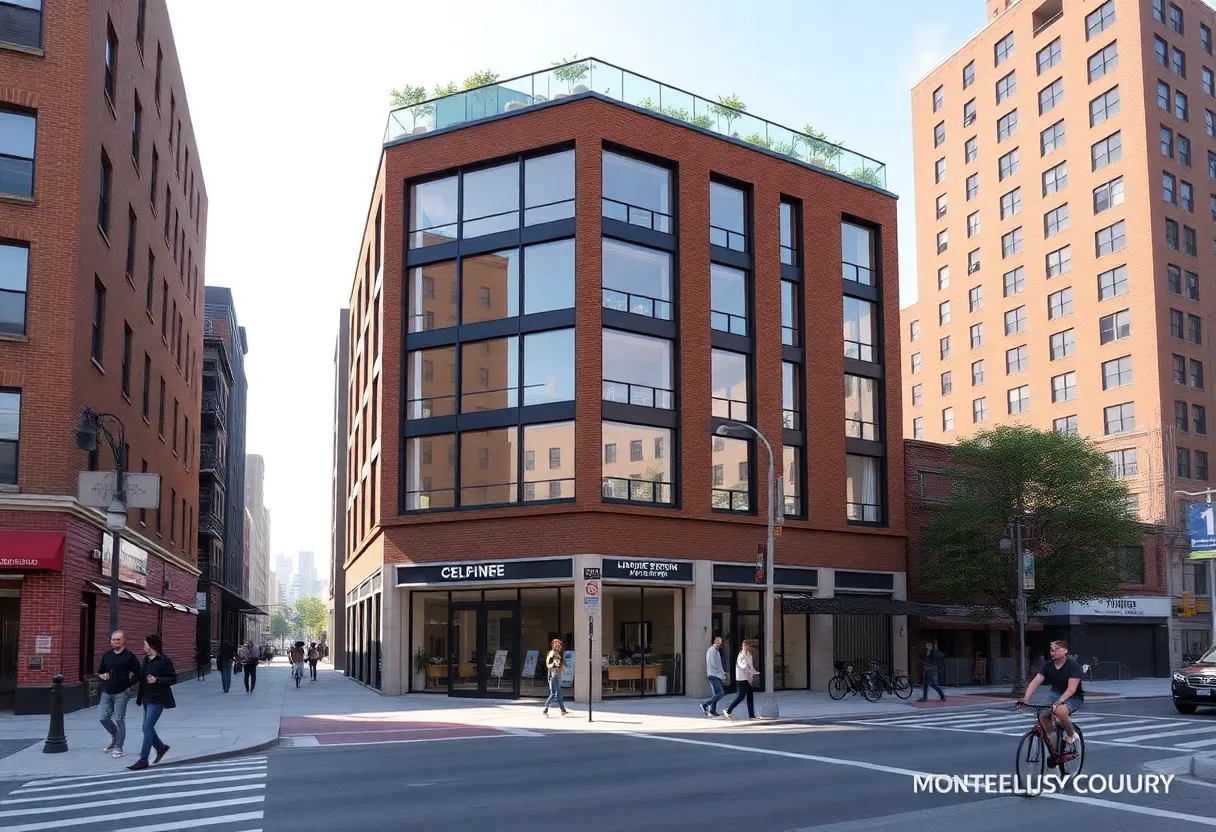Global, September 2, 2025
News Summary
Two scientific articles and several industry case studies chart rapid advances in digital twin technology for buildings and river basins. One paper proposes an MD‑DTT‑BIM framework that fuses BIM, IoT, AI and real‑time simulation and reports lab gains above 95% on multiple metrics using the CUBEMS dataset. A review argues basin‑scale twins need denser data, tightly coupled multi‑physics models and fair governance to improve flood forecasting and planning. Industry projects — from a radar tower virtual twin to national 3D mapping and rail works — show model‑based workflows cutting costs, time and errors. Authors call for broader field tests and equitable scaling.
Multi‑dimension digital twin advances: fresh construction news on MD‑DTT‑BIM and river basin twins
The construction and water management sectors are seeing a surge of digital twin approaches that aim to connect real‑time data, simulation, and predictive analytics across both buildings and large basins. A pair of recent studies highlights two ambitious directions: MD‑DTT‑BIM for smarter buildings and a full‑scale digital‑twin river basin concept intended to improve flood forecasting, governance, and equity. Together with industry case studies and ongoing infrastructure pilots, the work paints a practical path toward more reliable operations, safer environments, and better energy use in complex systems.
The Scientific Reports paper introduces a Multi‑Dimensional Digital Twin Technology‑assisted Building Information Modeling framework, abbreviated MD‑DTT‑BIM. Its main claim is substantial performance gains in building operations and maintenance by tightly integrating BIM, IoT, digital twins, and artificial intelligence. The reported improvements span operational efficiency, real‑time monitoring, energy use, occupant comfort, and indoor environment prediction accuracy. The study positions MD‑DTT‑BIM as a unifying architecture that supports real‑time data streams, simulations, and decision support for a building’s entire life cycle.
Key architecture elements in the MD‑DTT‑BIM framework include a virtual entity for construction components, a physical entity for actual construction, a twin data fusion layer, and services that bridge project management with construction processes. The model emphasizes standardization and interoperability so that modules can be deployed across different infrastructure types. The researchers outline a sequence of interactions that starts with a user interface, flows through a coordinating digital twin system, and returns a comprehensive report after simulation and feedback loops. The digital layer handles streaming data in a sequence of measurements, while the twin layer uses matrices and equations to track state, uncertainty, and energy metrics over time.
The reported numbers in the MD‑DTT‑BIM work are striking: improved operational efficiency by about 97.6%, better real‑time monitoring accuracy by 96.7%, energy consumption reduced by about 95.3%, occupant satisfaction up by 94.3%, and indoor environment quality predicted with 98.3% accuracy. The research relied on the Kaggle CUBEMS — Smart Building Energy and IAQ dataset from a seven‑story Bangkok office building with 33 zones, measured at one‑minute intervals over 18 months. The study compares its MD‑DTT‑BIM approach to benchmark models and notes that it integrates data from BIM, IoT sensors, environmental readings, and construction schedules to support energy savings and comfort improvements.
Beyond performance gains, the MD‑DTT‑BIM work highlights several practical design choices: a modular architecture with components named VG (virtual entity), PG (physical entity), DG (twin data fusion), SG (construction process service system), MG (existing project management systems), and CG (interrelations). It also emphasizes edge computing to cut sensor‑to‑DT latency and uses Bayesian inference and Kalman filtering to reduce data uncertainty. The authors discuss assumptions about sensor accuracy and latency and acknowledge potential drift or interference in real deployments. They propose adaptive error correction, redundant sensors, and Kalman‑based updates to mitigate data problems. The study also notes geographic scope limits and calls for broader cross‑validation across building types and climates, along with future work on edge processing, standardization, and sustainability modules.
In parallel, the npj Natural Hazards article argues that digital twins for river basins could transform water management but face three major hurdles on a basin scale: deficient data, poorly coupled multi‑physics models, and inequities created by governance gaps. The authors propose a digital‑twin river basin framework that combines hydrology, hydraulics, ecology, human activity, and infrastructure operations. A layered architecture is described: a Data Hub to centralize static and real‑time data, a Model Hub with physics‑based and data‑driven models, a Data Infrastructure for governance and data services, and a user interface layer for stakeholders. They stress the need for dedicated “water clouds” and upgraded cyberinfrastructure to store, process, and share data widely.
The river basin paper also cites real‑world drivers for digital twins, including notable flood events and national campaigns. It notes a 2022 initiative to digitalize seven major basins in China by 2030, with the Yangtze and Yellow basins among targets. It also references large‑scale climate and river management programs in Europe and other regions. Data requirements span water quality, demand, pollutants, urban networks, river morphology, land use, and operation data for water facilities. Technologies suggested include local sensor networks, laboratories, remote sensing, UAVs, and IoT devices. The authors discuss three pillars of interpretability for complex models—symbolic regression, SINDy, and attention mechanisms—to help reveal physical insight behind predictions.
The paper also addresses equity and governance, arguing that Global South regions often face higher vulnerability due to weaker infrastructure and expertise. Case examples include large‑scale floods in Pakistan in 2022 and Derna in Libya in 2023, underscoring the need for transboundary collaboration, training, and technology transfer. Policy recommendations call for top‑down standards, funding, and governance foundations to ensure digital twins support vulnerable communities and align with sustainable development goals. The authors envision linking global climate, Earth system twins with local urban twins to coordinate water, food, energy, and resilience efforts.
Industry coverage adds a practical lens on digital twins in infrastructure markets. A TechHQ overview of Bentley Year In Infrastructure winners describes projects where digital twins and model‑based approaches delivered measurable gains in power, rail, roads, water, and building sectors. Examples include underground substations reducing land use and rework, asset reliability programs trimming maintenance costs and boosting uptime, high‑speed rail projects saving hundreds of millions in construction costs and months of schedule time, and large urban or campus projects achieving significant material savings and faster design cycles. A Singapore 3D digital twin program demonstrates substantial time and cost savings for government mapping, while other projects show how cloud‑based federated modelling can improve collaboration and quality across multiple packages.
Taken together, the MD‑DTT‑BIM and digital‑twin river basin lines of work illustrate how digital twins are moving from isolated data dashboards to integrated systems that influence planning, design, operation, and policy. The studies emphasize practical challenges—data quality, model coupling, latency, equity—that must be addressed as these tools scale. The evolving picture includes standards, governance, and international collaboration as central ingredients for realizing the potential of multi‑dimensional digital twins in both built environments and essential natural systems.
Industry case highlights and practical takeaways
Across case studies, tangible benefits are linked to digital workflows, integrated data streams, and collaborative modeling. Substantial cost savings, faster schedules, and improved safety indicators are reported when teams adopt coordinated BIM/DT workflows, cloud data sharing, and multi‑disciplinary simulations. The examples underscore how digital twins can help teams anticipate failures, optimize energy use, and coordinate with stakeholders across agencies and sectors.
Overall, the literature points to a future where digital twins provide a common language and toolkit for engineers, planners, and policymakers to test ideas before construction or disaster events, and to monitor performance in real time once projects are in operation.
Key takeaways for practitioners
– Expect large performance gains when integrating BIM, IoT, and AI in a modular, standardized framework. MD‑DTT‑BIM illustrates how such integration can sharpen operational efficiency, monitoring accuracy, energy use, and occupant comfort.
– For river basins, focus on data quality, model integration, and governance to reduce inequities and improve resilience. A layered architecture with data and model hubs can support transparent, scalable decision making.
– Industry projects show that digital twins are most effective when coupled with clear workflows, cloud collaboration, and cross‑disciplinary teams that span design, construction, operations, and maintenance.
Frequently asked questions
- What is MD‑DTT‑BIM?
- MD‑DTT‑BIM is a framework that combines multi‑dimensional digital twins with building information modeling to improve real‑time monitoring, planning, energy efficiency, and decision making across a building’s lifecycle.
- What is a digital‑twin river basin?
- A digital‑twin river basin is a comprehensive digital replica of a watershed, including hydrology, hydraulics, ecology, human activity, and major engineering facilities, used for forecasting, early warning, virtual drills, and scenario planning.
- What are common data and model needs for these twins?
- Common needs include static and real‑time data, physics‑based and data‑driven models, data governance, cloud or edge computing, and interoperable interfaces so models can exchange information in real time.
- What benefits do industry case studies report?
- Case studies show savings in costs and time, improvements in safety and reliability, enhanced design and construction efficiency, and better operational performance when digital twins are used to coordinate across disciplines and packages.
- Are these studies open access and widely available?
- Several articles on digital twins in construction and water management are published as open access, detailing architectures, datasets, and pilot results, and are available for independent review and replication where permitted.
- What are the main challenges to scaling digital twins?
- Challenges include data gaps, multi‑physics model coupling, latency, sensor reliability, governance and equity across regions, and the need for standards and governance that enable cross‑border collaboration.
| Feature | Description | Relevance |
|---|---|---|
| MD‑DTT‑BIM framework | Integrates multi‑dimensional digital twins with BIM, IoT, and AI for buildings | Foundational concept with large reported gains in efficiency and energy use |
| Digital‑twin river basins | Comprehensive basin models covering hydrology, hydraulics, ecology, and operations | Targets forecasting, early warning, and equitable water management |
| Data and model layers | Data hub, model hub, data governance, and user interfaces to enable real‑time interaction | Enables scalable, transparent, real‑time decision making |
| Industry case studies | Examples across energy, rail, road, urban, and water sectors showing measurable savings | Demonstrates practical value and replication potential |
| Equity and governance focus | Attention to disparities in data, capability, and decision power across regions | Important for fair and effective deployment of digital twin solutions |
Deeper Dive: News & Info About This Topic
Additional Resources
- PR Newswire: Wuhan City Operation Center and Huawei jointly launched a global demonstration site
- Google Search: Wuhan Huawei smart city demonstration site
- Nature: Framework for basin-scale digital twins (npj Natural Hazards)
- Encyclopedia Britannica: river basin digital twin
- Scientific Reports: MD‑DTT‑BIM building digital twin framework
- Google Scholar: MD‑DTT‑BIM digital twin building
- Electronic Design: Building digital twins to boost power density
- Google News: digital twins power density
- Dassault Systèmes (3DS): CSADI Smart Construction customer story
- Google Search: CSADI smart construction 3DS digital twin





